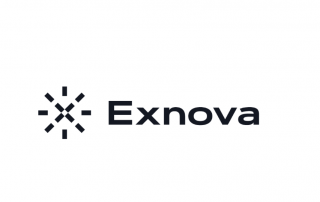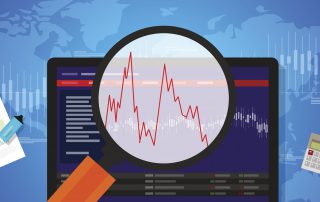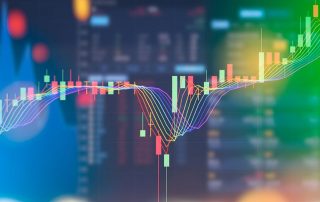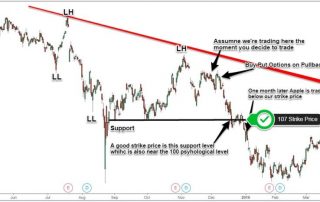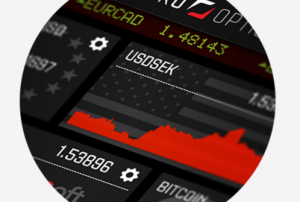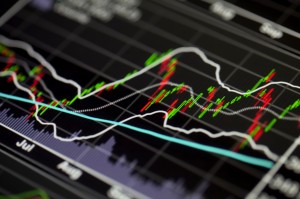Education
Education is the key to successful day trading, and there are many online education options. Whether you want specialized forex, futures or cryptocurrency training for advanced traders, or a free ebook for beginners, we explain how to find the best educational course for you and your needs.
Day trading is a huge subject that may seem overwhelming to potential traders. Trading permissions are complicated; there are no shortcuts or get-rich-quick schemes – and don’t believe anyone who tells you otherwise.
Trading Experience
However, that doesn’t mean you can’t make money from day trading. It just means that to profit from trading you must also profit from the experience and expertise of others. Investing in the best trading education today can equip you with essential knowledge, a valuable support network, and can set you on the path to trading success.
Here, we will offer some pointers that will help you choose the right day trading education for you. No service can replace you learning ‘on the job’ – experience trading and building your own – but they can work alongside your own trading to help inspire and improve your skills.

Specific Courses
If you are not trading and looking for the best trading education today, you need to think about the type of trading you want to do. Are you interested in trading options or futures? Do you want simple stocks or complicated indexes? There are many options available:
Shares / Stock Trading
The most popular form of trading. This involves buying and selling shares of different companies through the stock exchange. Our stocks page can help clarify which stocks are best suited for day trading – ultimately, you volume and volatility.
Most stock trading educational materials will revolve around a ‘buy and hold’, long-term strategy – based on the company’s fundamentals and values. Day trading stocks depend more on price action. Therefore, learning about technical analysis is more important for company analysis.
Forex Trading
Forex is a very popular form of trading, with billions being traded every day. Short for ‘foreign exchange’, forex trading is speculating on whether one currency will become more or less valuable than another. We have a separate article looking at forex education training here.
Commodity Trading
Commodity trading is where you trade in things like precious metals or raw materials that make other goods. Commodities are divided into two groups: Hard commodities are things that are mined (gold, oil and others) Soft commodities tend to be agricultural things or things that are grown (wheat, sugar and so on)
Cryptocurrencies
Cryptocurrency requires a higher level of education than most these days, simply because the product is not that mature. You will hear Bitcoin, which is the most famous example of cryptocurrency. Bitcoin and others such as Litecoin and Ripple are digital currencies that work independently of banks. Cryptocurrency trading involves using digital wallets, key blocks and complex encryption methods.
However, it is possible to speculate on the price movements of cryptocurrencies without owning them. This simplifies the process and makes it much easier.
Futures Trading
Futures involve predicting whether the price of a commodity or stock will increase or decrease within a certain period of time.
Trading Options
Options are one of the more complicated forms of day trading and of course require some form of trading: It basically involves buying an ‘option’ to buy or sell a stock during or after the time depending on whether you think the stock price will fall or rise.
Binary Options Trading
Binary options are a simple form of options trading where you predict whether the price of a stock or commodity will rise or fall within a set time frame. The investment stock is fixed, so potential losses will be limited. As the payout is also known in advance, this is often referred to as a ‘fixed risk’ trade. A trader will know exactly how much they will win or lose, regardless of the size of the price movement on the underlying asset.
Binary is a high risk trade, and education options are limited. They are now banned in Europe due to the proliferation of scammers. Paying for education is equally high risk, and a free website or forum is a superior option, along with a demo account.
Index Trading
Trading indices involves trading on a group of stocks related to a specific area. For example, the FTSE 100 is a collection of the top 100 companies quoted on the London Stock Exchange. The S&P 500 and the Nasdaq are the same group of stocks traded in the United States.
It is possible to trade these index prices, and learn how to trade them revolving around price action and economic analysis for the market as a whole.
Social Trading / Copy
Social or copy trading involves setting up a trading account and connecting it with other, more experienced traders. Whatever trade they make, your account also means that your profits and losses are ‘copied’ compared to how much money you have invested.
Swing Trading
Swing is not a form of day trading, but you will see baLook for day trading education sites that offer courses in it. Swing trading is a form of stock trading where you hold your shares for anything from 2 days to 2 weeks to profit from any ‘swing’ in their price.
Free Education Vs Paid Education
Cost Comparison
If you are researching a trade education, one of the main things you will consider is cost. The first thing to point out is that there is no such thing as a free lunch; almost every platform or course that promises free education or trading tips will, at some point, want you to pay for a more in-depth service.
The aim is to find high quality courses that offer value for money. What money is worth depends on your own ambitions and circumstances. Here are some things to consider:
- Know what you want: There are many trade education opportunities out there. Before you enter your card details on the first website that offers to help you find financial freedom, make sure you know what you’re getting yourself into. Do you want to trade futures or forex? Do you want to invest less or can you afford more? Do you learn best by reading or watching? Do you want someone to walk you through the basics or are you happy to invest in some pointers and get cracking? Knowing this will save you a lot of wasted expenses that could be better invested in successful trading.
- Do your homework: Some websites are upfront about how much they charge for courses or educational packages, others require more investigation. If the course offers ‘free’ education, chances are that after many lessons, you will have to pay. These costs are not necessarily advertised or made clear, so be sure to read the small print or ask in advance what, if any, costs may be requested.
- Budget: The price of courses and indicators can vary wildly from $20 to $9000. There are also subscriptions that can range from $10 a month to almost $200. Spending the money on is a big commitment, if you feel a premium course is for you , make sure you can afford it and you will get your money’s worth out of it.
Finding Your Level
Online trading courses often have different levels, usually Beginner, Intermediate, Pro or similar. As you would expect prices are on a sliding scale, with beginner courses being cheap and advanced more expensive.
When searching for the best trading education, assess your trader level realistically. If you don’t know your FTSE from your elbow, then signing up for a premium, gold member trading room won’t make you a premium trader at all.
On the other hand, if you have done some investing in stocks and want to take your trading to the next level, or perhaps engage in another type of trading, then the intermediate course will be for you.
Advanced trading education should only be considered by those who have been full-time traders for a while and feel that they would like some mentoring to work along with their trading and keep their strategies fresh.
Whatever your level, remember that education works best as a supplement to your trade. All tips and books and demo accounts that can be purchased are not a substitute for real real trading, real time, money.
Paying For Quality
Day trading education varies in quality and type of resources offered. Also, beware of trading school founders who say they started offering courses because they are sick of spending money on systems and indicators that don’t work, expensive courses don’t necessarily equate to reliable courses.
The types of services or resources you might expect to find as part of a trade education package might include:
- Indicator: A program that uses various calculations to analyze and show the direction of stock prices
- Demo Account : This allows you to practice trading using a simulated platform and simulated money
- Webinars / Tutorials / Live Classes: Live online teaching or tutorials with experienced traders
- Mentoring: One-on-one support from an expert trader
- Interesting materials: This could be things like PDF booklets or interactive quizzes that explain trading in more depth
- Weekly / Daily Email: This may give you a trader overview or market advice for the day
- eBooks: eBooks are sometimes available free to generate interest in more detailed, paid courses
The main indicator of the quality of the course or package is how reliable the dealer is behind it. Only consider investing your money if:
The dealer behind the education has at least ten years of experience and demonstrable success. You can only become an expert trader through hands-on experience; anyone without enough of that won’t be worth your money.
This course teaches you how to trade on your own. Any genuine trading teacher or mentor will empower their students to trade for themselves. Any course or platform that requires constant payment to keep you on their site is less likely to put you in the right headroom to become a successful independent trader.

Education Website Reviews
Now that we know what we’re looking for and what it has to offer, let’s take a look at some of the best trading education websites out there and give you an overview of what they have to offer:
Day Trading Academy
The Day Trading Academy is the brainchild of Marcello Arrambide, a trader with 17 years of experience. After losing a large amount of money to bad software and indicators, he built his own experience and later created the Day Trading Academy as an “organic approach” to educational trading.
The theory is that those who learn through the Day Trading Academy then teach others what they learn. It is not a company; it is a “trader community“.
So far so inspiring, but what does it mean in practice? Day Trading Academy focuses on futures trading; primarily using the E-Mini S & P, an American futures index derived from the S & P 500. By teaching you to use a system known as the Congress Trading Strategy, the Day Trading Academy uses several pointers but focuses on teaching you to trade for yourself.
The Day Trading Academy is open to traders of all experience levels (broken down into Beginner, Intermediate, Advanced and Pro). They offer a free 41-page PDF booklet and a free web class if you sign up for their newsletter.
If you want the full four-part course, it’s now $2997. For this you get videos, exercises and the chance to get feedback and advice on your growing knowledge.
Warrior Trading
Warrior Trading offers trading instructions in several different areas, including Options, Swings and Cryptocurrencies. Like the Day Trading Academy, Warrior is also proud to be a trading community.
The difference is that while Day Trading Academy focuses on the personal journey of its founder, Warrior focuses on testimonials from successful Warrior students. This compensates for the fact that only one of the five Warrior mentors has many years of trading experience.
Practically speaking, one of Warrior Trading’s main selling points is the members’ live chat room which involves reviews, Q&As and watchlists from other traders. The core of their trading philosophy is to teach their trading system in a 15 chapter course.
In terms of trading education, Warrior offers three packages: Starter, Pro and Inner Circle application only. Among the contents of this course is access to chat rooms and trading simulators. In-depth courses and group mentoring starting with the Pro package. Exclusive access to top dealers and one-of-a-kind coaching is only available with the Inner Circle package.
The Warrior Starter package is $997 for one month. Pro Bundle packages range from $4299 to $5299 for between 90 days and 1 year access. Both packages then subscribe you to Warrior for $197 per month. The Inner Circle package is a flat $9997 per year.
Quantum Trading
Quantum Trading is the brainchild of Anna Coulling, a highly experienced trader who has written many best-selling trading education books. Quantum Trading Education covers various types of trading including stocks, forex, cryptocurrency and binary options.
Quantum’s approach to educational trading is selling indicators and platforms. Unlike Day Trading Academy and Warrior there are no courses or strategies offered here, but there are free video tutorials and articles on how to use the products offered.
The indicator packages available at Quantum – which are mostly forex-based but cover some other areas – range in price from $20 to $900.
IG Academy
IG Academy is an award-winning trading education website that claims over 40 years of experience in the trading sector. With a focus on trading through leverage, spread betting and CFDs, IG helps you trade in several styles such as indices, forex, stocks and commodities.
IG Academy offers several free courses that include video tutorials, interactive exercises and quizzes.
They also offer live trading webinars and free demo accounts for those who sign up to their website. They also have a free chat room (although you must be a member to post) with over 30,000 members.
In the long run, what IG Academy encourages is that you sign up to use their trading platform, whichcontinues to offer you support and education as you trade for yourself. Unlike the companies discussed so far, IG makes its money by charging a commission on your trades. If your trading volume falls below the set amount, they also charge a subscription of $30 per month.
Investopedia
Investopedia is a company based in the United States, formed in 1999 with the aim of “empowering people with accurate and unbiased financial education”. They offer a variety of financial courses on their Investopedia Academy, covering everything from day trading to personal finance.
Types of trading Investopedia offers courses including options, forex, cryptocurrency, penny stocks, binary options and more.
Investopedia courses all cost $199, with various packages available at various prices. Payment is a one-time affair, there is no subscription and once you have purchased the course, it is yours. Course content generally tends to involve videos, exercises and downloadable materials. The website also offers access to past free webinars.
Investopedia is different from many of the other educational websites we look at here because of its more scientific approach: You buy the course, learn from it and use it to extend your own trading; you are not sold a platform or lead set.
Online Trading Academy
Not to be confused with Day Trading Academy, Online Trading Academy’s USP is a “patented core strategy” that can be used for trading stocks, forex, futures and options.
They have over 130 tutors, most of whom have real-world trading experience. To participate in any OTA course earning traders must first take a free half day class.
The Core Strategy course has two levels: Core Strategy and XLT Core Strategy (XLT stands for Extended Learning Track). The Core Strategy Class is a two-part course that costs $7000 and takes 7 days to complete in a class of no more than 22 students. As well as teaching core OTA strategies, it offers access to a real-time trading platform and involves an exam at the end.
The XLT course is $8500 for three months followed by a $625 monthly subscription, or you can pay $12500 for three months and have lifetime access. The XLT course is more than a mentoring situation for your actual trading. You can trade live while being able to use OTA trading tools and talk to their investors.
The Stock Whisperer
As the name suggests, The Stock Whisperer is a stock-focused trading education site, although there are several swing and options education packages available.
The Stock Whisperer is Stefanie Kammerman, a well-known name in trading circles who has been trading since 1994. Kammerman is known as the Stock Whisperer because of her clear sixth sense when it comes to stock market movements.
The Stock Whisperer website is a treasure trove of stock education resources. Its subscription-only trading room, Java Pit, allows traders to view its screen during pre- and live trades.
The focus of many course packages is on training you to trade for yourself. One-on-one stock training with Stefanie herself can be purchased between $299 and $1249.
Stock Whisperer also offers ‘Boot Camp’ packages of various lengths. This is an intensive, online course that helps educate you about trading and allows you to participate in simulated trading.
Boot Camps cost anywhere up to $3499. There are also downloadable workshops available on various aspects of the trade. This may be better for traders who already have trading experience and retail from $99 to $999.
TRADEPRO Academy
TRADEPRO Academy was founded in 2012 by George Papazov, a Canadian who, despite looking young, has almost 20 years of trading experience. TRADEPRO offers to ‘verify’ potential traders in stocks, options and forex trading (it’s worth noting here that you don’t need to be verified just to trade stocks from a broker account).
There are three levels of trading courses at TRADEPRO: Swing, Pro and Elite. All involve the same course in Trading Basics, Options and Forex and access to Webinars and daily tips. Pro and Elite packages offer advanced courses, more support, coaching and access to more trading software.
An interesting aspect of the TRADEPRO courses is that they are solely on a monthly subscription – as opposed to an upfront payment and subscription. The Swing package is $99, Pro $129 and Elite $169.
Tradenet
“Tradenet is the best trading academy in the world” announces their home page. Tradenet focuses on teaching forex, commodities and EU stock trading. The brain behind the company belongs to Meir Barak, a professional trader and market expert who founded the site in 2004.
There are a variety of day trading courses and resources available from Tradenet: There are self courses, teaching courses, weekly coaching sessions and paeducational cases, ranging from a few hundred dollars up to around $5000. You can download the resources yourself, or get a 1-on-1 session with a Tradenet professional educator. All these resources are built on Meir Barak’s personal trading strategy.
Tradenet sells four different trading education programs: Introductory, Student, Expert and Pro. This increases in price from $500 to $9000 and includes access to several sessions and resources mentioned above as well as a demo trading account.
Online Educational Trading Videos
One thing we haven’t covered in this section is the role of YouTube trading educational videos. The first thing to say about this is that, while there is a place for them, it is a potential minefield. If you’re looking for free trading education on YouTube, you should apply the same research standards for trading education courses.
Before you rely on a video because it has impressive graphics or a sharp title; remember to consider whether the video presenter has significant experience as a trader. Are they really teaching you something for free or just tricking you into buying something you don’t need?
Can a profession as complex as day trading be distilled into a five or ten minute YouTube tutorial?
As a guide to the absolute basics of day trading for beginners, YouTube is hard to beat. However, it’s also worth questioning how many traders worth their salt will give a fully worthwhile trading education.

